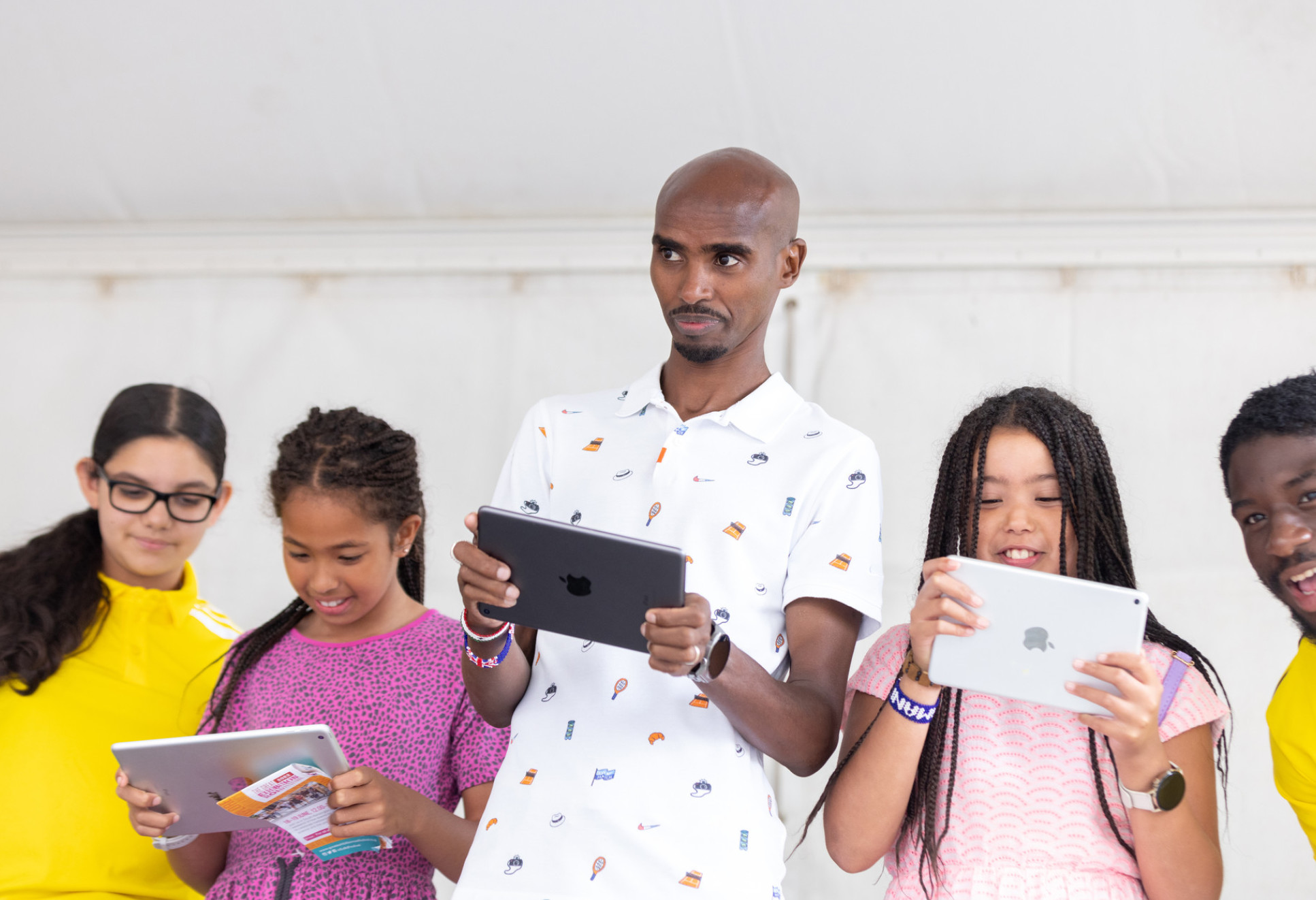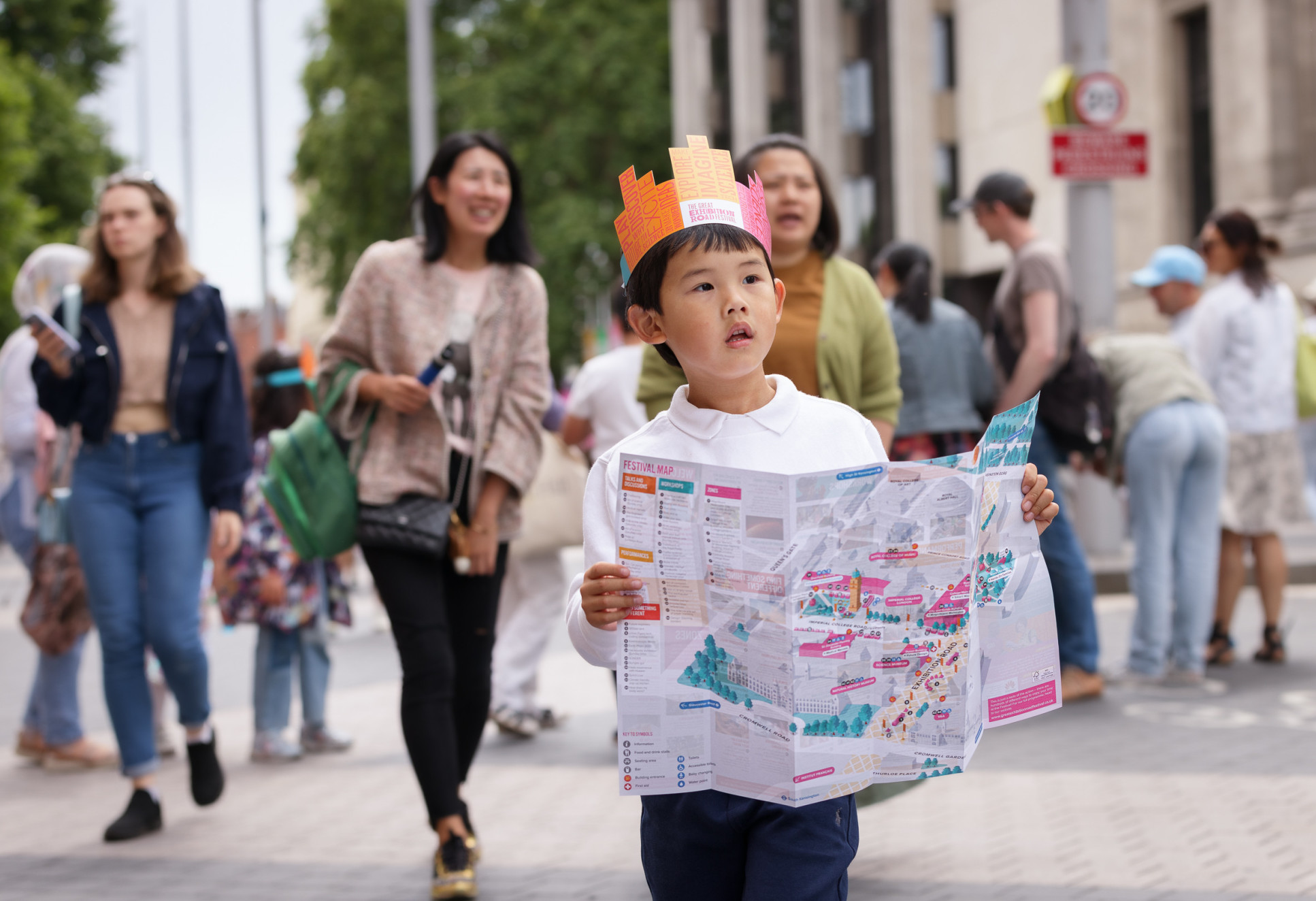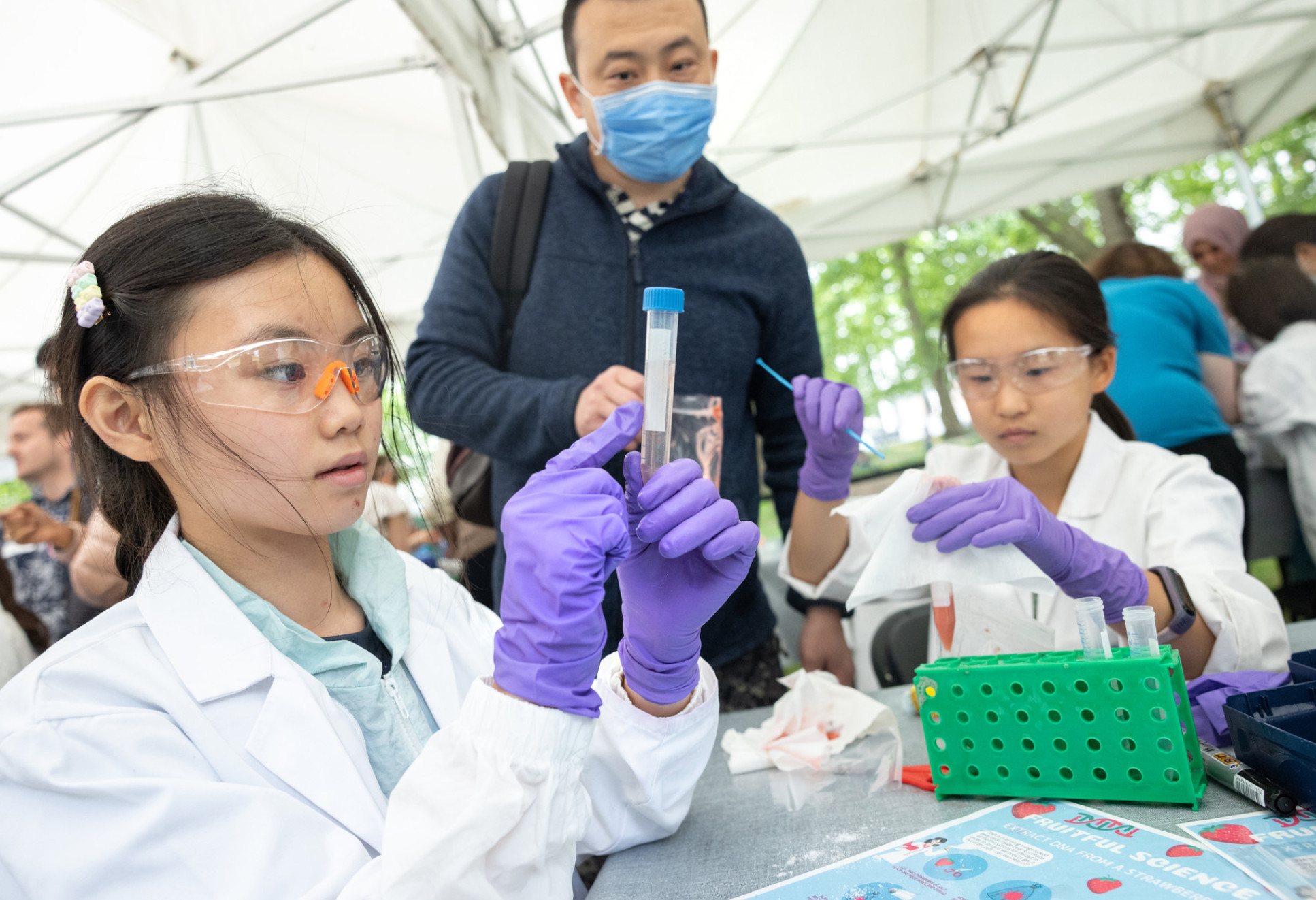Great Exhibition Road Festival 2022 serves up trailblazing inspiration
Trailblazing ideas and unique experiences from science and the arts on show as Great Exhibition Road Festival transforms South Kensington.
Groundbreaking theory and practice across science and the arts formed the backdrop for the Great Exhibition Road Festival 2022: Trailblazers, which saw over 38,000 visitors journey to South Kensington for the weekend-long festival.
Imperial College London partnered with the Science Museum, Natural History Museum, V&A and Royal College of Music, as well as the Goethe-Institut, Royal College of Art, Royal Parks and the Royal Geographical Society to co-ordinate and deliver a unique programme of events. Olympian Sir Mo Farah even dropped by the Festival to encourage visitors to ‘exercise their mind.’

Talks, workshops, performances and activities saw audiences inspired by innovation in medicine, art, technology, design, chemistry and more, from cutting-edge virtual reality experiences to insight into forgotten histories, untold stories and scientific breakthroughs. As in previous years, the full programme drew on the vast wealth of expertise from the College, museums and cultural institutions who collaborated to deliver it.
Passion for pollinators
For families and for kids I think it is great to have the opportunity to discover different scientific projects that you probably will never be aware of if you don't come to this type of event. A visitor to the Festival
Bee ecologist Dr Richard Gill from the Department of Life Sciences (Silwood Park) was excited to bring the wonder of pollinators to the public with ‘Bees and us.’ With colleague Dr Peter Graystock, plus a team of volunteers from Imperial, the Bumble Bee Conservation Trust, Butterfly Conservation and Seedball, he ran a hands-on workshop packed with information and activities.
For him, the Festival was a positive opportunity to “build excitement for bees and butterflies, showcase ecology, and educate the public about the threats and harm faced by bees.” The stand also explored ways to support pollinators, with children offered an opportunity to make a bee-friendly seed ball to plant at home.
Creating wonder with science and art
Neuroscientists Ani Kulkarni and Mathilde le Gal de Kerangal from the Department of Bioengineering joined forces with science artist Nick Sayers to celebrate tricks of the mind with ‘Make Your Own Brain Illusions.’ Showcasing a work adapting the technology of old record players running at different speeds to create illusions, Nick said: “I enjoyed enthusing the public about science and its creative applications, and the connection between art and science.” Children were invited to create their own brain illusions by drawing around bicycle parts and giving their picture a spin on the adapted record players.

Exploring the world of nano
In the Magnificent Molecules Zone, Chemistry PhD student Rupali Dabas was ready to showcase nano-medicine. “My work involves making nanoparticles for mRNA delivery, similar to what was used in COVID vaccine technology. Today we want to share our passion for science and maybe debunk some of the myths around nanoparticles – they’re so amazing in what they can achieve, with immense potential to transform and revolutionise medical research.”
Zoning in
This year’s Festival was bigger than ever, spilling out into the great outdoors, with visitors invited to explore areas themed by interest. Princes Gardens hosted the Hands-On Families Zone, packed with games, storytelling, crafts and experiments for budding scientists, engineers and even mini suffragettes. Children could build a bug, try paper marbling, or discover the world of badgers.
The Curiosity Zone provided a ‘scientific selection box’ of activities for all ages on Imperial College Road, exploring fascinating research from Imperial, including light that diagnoses diseases and 3D printed bones. Visitors were invited to make DNA printed bracelets, origami boats and microchip keyrings.

Indoors, the Medical Marvels Zone explored advances in the fight against malaria and cancer, while the Adults Zone at the Royal Geographical Society served up fashion upcycling, cloud demos and controlled corrosion alongside drinks on the terrace.
I really liked meeting the Geologists who explained about carbon capture just because I didn't know much about it and that was very interesting. It was nice because I only really came for the children, I didn't really know that I was going to get so much out of it. A visitor to the Festival
The Smart Machines Zone offered insights into advances in artificial intelligence and the digital realm, while the Future Design Zone invited visitors to explore cutting-edge innovation across the four floors of the Dyson Building.
Visitors could explore the world in nano in the Magnificent Molecules Zone, and on Sunday, the Neurodiversity Zone celebrated the positive impact of different thinking in science and the arts, with unique talks, activities and calming environments on offer.
Inspiring talks
Alongside a vast array of activities, audiences were offered a range of fascinating talks from inspiring public figures. Panellists and speakers explored topics ranging from climate change to aging, the search for life on Mars and the untold stories of LGBTQ+ lives in our museums. Britain’s first astronaut Helen Sharman explored how science and technology might help overcome environmental and geopolitical challenges at the poles. Curator Annemarie Bilclough discussed the life and legacy of Beatrix Potter as an artist and natural scientist, while author, filmmaker and lecturer Juliet Jacques discussed her latest work exploring the lives of trans and non-binary people.
Engaging Londoners
Vicky Brightman, Festival Director and Head of Public Engagement at Imperial said: "The Festival is a special opportunity to engage Londoners with world-leading research happening at Imperial, to get insight from a diverse range of people to help further inform our research and to inspire people of all ages through unique science and arts collaborative events.
"We are enormously grateful to the hundreds of staff and students in our Imperial community, and our cultural neighbours, who take part in public engagement events, including the Great Exhibition Road Festival. Their creativity and dedication makes events like this possible."
Article text (excluding photos or graphics) © Imperial College London.
Photos and graphics subject to third party copyright used with permission or © Imperial College London.
Reporter
Joanna Wilson
Communications Division
Thomas Angus [Photographer]
Communications Division
Sarah Webb
Office of the Provost
Martin Sayers
Communications Division